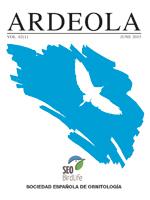Based on 52 nesting attempts of Tengmalm's owl Aegolius funereus in the Šumava Mountains (South Bohemia, Czech Republic), in habitats comprised mainly of Norway spruce forests, we investigated the relationships between diet composition and fledgling productivity of this owl. We found that (i) owls feed mainly on Sorex shrews (39%), Microtus voles (19%), Apodemus mice (15%), bank voles Myodes glareolus (14%) and birds (6%), (ii) the percentage of Apodemus mice, as well as the percentage of Myodes glareolus, negatively correlated to the percentage of Sorex shrews and birds in the owls' diet, and (iii) the fledgling productivity of the owls positively correlated to the percentage of Apodemus mice in the diet. Finally, (iv) the percentage of Microtus voles, the second most common prey, exhibited no close relationships with other prey groups or fledgling productivity of the owls. These results suggest that Apodemus mice were an important prey in the diet of the Tengmalm's owl in our study area, and support the theory that, compared to their northern counterparts, nocturnal raptors in Central Europe may be less dependent on Microtus voles due to the increased diversity of available prey species.
How to translate text using browser tools
1 June 2015
Fledgling Productivity in Relation to Diet Composition of Tengmalm's Owl Aegolius funereus in Central Europe
Markéta Zárybnická,
Bohuslav Kloubec,
Ján Obuch,
Jan Riegert
ACCESS THE FULL ARTICLE

Ardeola
Vol. 62 • No. 1
June 2015
Vol. 62 • No. 1
June 2015
Apodemus
Boreal Owl
diet
Dieta
Microtus
mochuelo boreal
reproductive output




